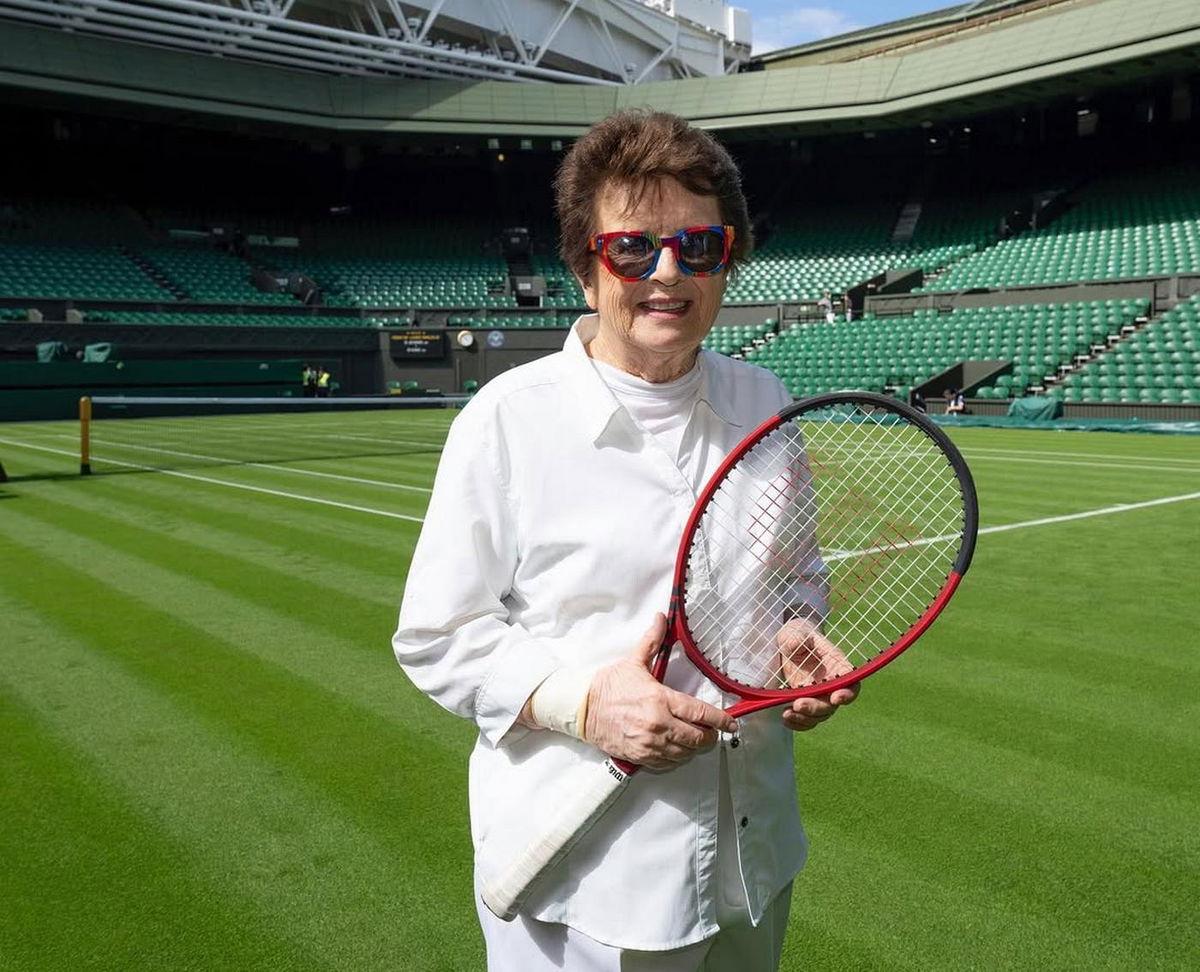
Imago
Image Credits: Billie Jean King/Instagram

Imago
Image Credits: Billie Jean King/Instagram
The ever-strict ‘all-white’ dress code at Wimbledon has remained largely untouched for nearly 150 years, surviving every era of transformation the sport has seen. From wooden rackets to power baseline play, and from amateur champions to global superstars, the game has evolved — but this one sartorial tradition has refused to budge. While many icons have embraced the tradition as part of Wimbledon’s storied charm, not everyone has worn it comfortably.
Watch What’s Trending Now!
The rule was first formalized in 1877, when players were required to wear mostly white outfits, though color accents were still tolerated. In 1963, the guidelines became stricter, mandating “predominantly white” clothing. By 1995, the policy escalated to demand “almost entirely white” attire, a rule enforced so rigidly that even minor deviations led to penalties. It wasn’t until 2023 that organizers introduced a small yet significant concession: allowing women to wear non-white undershorts, a response to years of criticism from current and former players about how the rule failed to consider the anxieties of competing while menstruating.
Over the years, a number of players have objected, some quietly, others defiantly. Andre Agassi famously skipped Wimbledon from 1988 to 1990, refusing to conform to what he called its “stuffy” rules. Anna Kournikova found herself in hot water in 2002 when she wore black shorts during practice and had to borrow white ones from her coach. More recently, players like Monica Puig, Daria Gavrilova, and Coco Gauff have openly discussed the stress of playing in white while on their period, with Puig revealing she often feared bleeding through her clothes on court. Even Roger Federer, a player synonymous with Wimbledon, pushed back in 2015, saying: “I love Wimbledon, but they’ve gone too far now.” And now, nearly a decade later, another tennis icon has added her voice to the chorus.
ADVERTISEMENT
According to King, the ‘all-white’ code has been a “total mistake.” During an interview with The Telegraph on June 29, she didn’t shy away from criticizing the organizers for continuing the tradition. But why is she so annoyed with the rule? Well, she has a solid reason. The 12-time singles Slam champion believes that the all-white requirement makes it difficult for viewers to distinguish between players while watching on television. “There’s a match that comes on, you sit down, and you look—let’s say it’s television—who’s who? Tennis people say, ‘Well, the mark is next to their name’ (to indicate who is serving). I shouldn’t have to look at a mark. I shouldn’t have to look at anything. I should know who’s who. My sport drives me nuts,” she said. She added, “You can change tradition.”
King’s objections extend beyond aesthetics. They tap into the commercial and viewer-experience potential of modern tennis. In the same Telegraph interview, she argued that Wimbledon is missing significant revenue and branding opportunities by enforcing uniformity. “I’d have merch with their names on the back so they’d make money, the tournament makes money, everybody makes money,” she said. She sees fan engagement in other sports, like cricket’s Ashes (since 2019) or rugby’s Six Nations (since 2024), where names and numbers on jerseys have boosted visibility and marketing as models Wimbledon could emulate. Moreover, King’s critique resonates with her broader philosophy of equality and inclusion.

Getty
LONDON, ENGLAND – OCTOBER 07: Billie Jean King attends the American Express Gala & European Premiere of “Battle of the Sexes” during the 61st BFI London Film Festival on October 7, 2017 in London, England. (Photo by Tim P. Whitby/Tim P. Whitby/Getty Images for BFI)
She pointed out that the dress code, originally rooted in Victorian-era notions of propriety, ignores modern needs. She recalled her own experiences: her generation played in white every week, and the uniform anxiety around menstrual visibility was real. “My generation…we always worried because we wore all white…We’re entertainers. We’re bringing it to the people,” she emphasized in a CNN interview.
ADVERTISEMENT
Over the years, some players have deliberately tested the boundaries of Wimbledon’s strict dress code, sometimes as a subtle rebellion, other times as bold defiance. In 2022, Nick Kyrgios walked onto Centre Court wearing a bright red Jordan cap and matching red-and-white sneakers following his quarterfinal win—an open disregard for the all-white requirement that earned him a warning and criticism from tournament officials. In earlier editions, Roger Federer was forced to change shoes in 2013 because his orange-soled Nike footwear was deemed non-compliant, despite being predominantly white otherwise. Even Serena Williams, who generally adhered to the dress code, once wore hot pink undershorts in 2012—an act she later attributed to superstition and comfort.
ADVERTISEMENT
But when Novak Djokovic stepped onto the court in 2024 wearing a grey knee brace, visible beneath his white kit, he wasn’t met with warnings or fines. Instead, organizers made a rare exception.
When Novak Djokovic sported a non-white accessory at Wimbledon
Last season, Novak Djokovic stepped onto the grass courts of the All England Club for his first-round match against Czech player Vit Kopriva. At first, everything appeared normal. But then something caught the officials’ attention: Djokovic was wearing a knee compression sleeve in gray. And that, of course, became an issue.
ADVERTISEMENT
The Serbian wore the knee sleeve due to surgery he had undergone before the tournament. However, the gray color posed a problem because it didn’t comply with the all-white dress code. Djokovic explained that he had sought permission in advance and had chosen light gray as it was the closest available shade to white.
“I did check. I actually just met the chairwoman right before walking onto the court,” he said, as reported by the ATP website in July 2024. “She gave me a thumbs-up, so it was okay. Of course, we did check in the days prior to get permission. We’re trying to find a white one—trust me.”
Djokovic added, “I know it’s (gray) not ideal. I like to go all-white and I like to respect the rules. But I got the permission. I told them we’ll do our best to have a white one for the next match.”
ADVERTISEMENT
Well, Djokovic seemed to have his reasons. But, what do you think about Wimbledon’s resolve to preserve its all-white dress code? Let us know in the comments below.
ADVERTISEMENT
ADVERTISEMENT
ADVERTISEMENT

